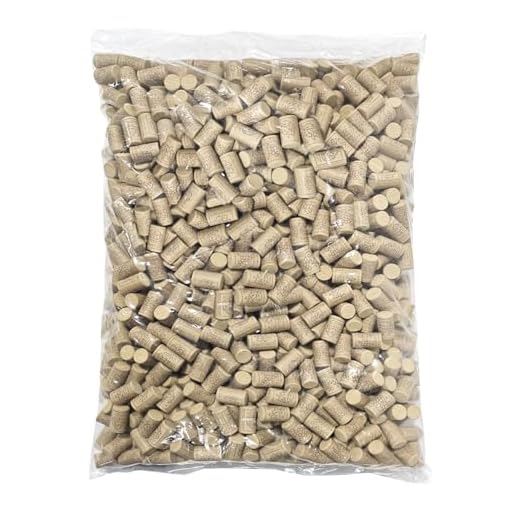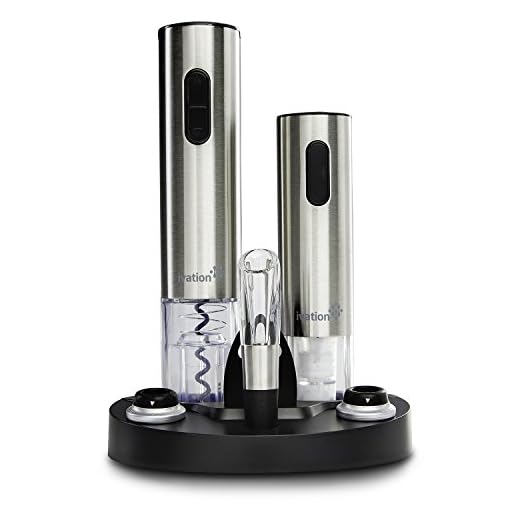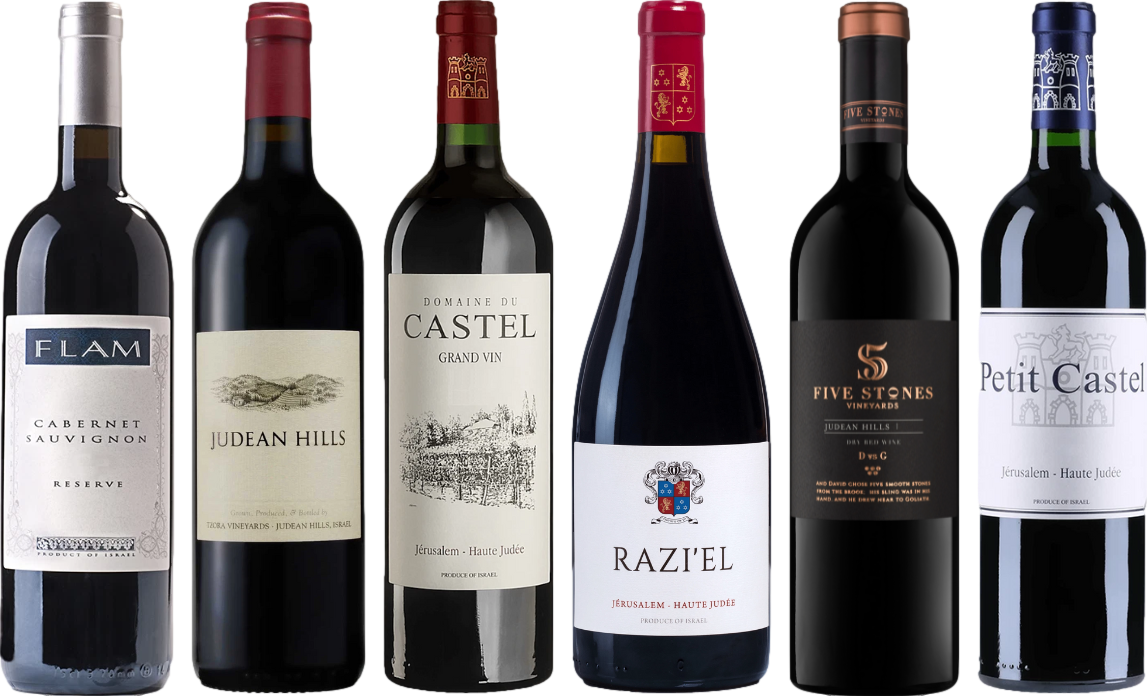



Once a bottle is uncorked, the contents typically maintain their quality for approximately 3 to 5 days. However, this duration can vary based on several factors, including the type of bottle closure and the storage conditions. Sealing the bottle with a cork or a specialized wine stopper can help extend its lifespan.
Temperature plays a significant role; keeping the opened bottle in a cool, dark place helps preserve flavor and aroma. Ideally, the storage temperature should be around 55°F (13°C). Exposure to light and heat can accelerate the deterioration process, leading to a decline in taste.
While some wines may last longer, their characteristics may change, and they can develop off-flavors. It’s best to consume the remaining product within the recommended timeframe for optimal enjoyment. If you’re uncertain, trust your senses–if the taste seems off, it’s wise to discard it.
Storage Duration for Opened Bottles
Once you uncork a bottle, expect it to maintain its quality for about 3 to 5 days. However, this varies based on factors like the type and quality of the beverage, as well as how it’s stored. For instance, bolder varietals often have a longer shelf life compared to lighter ones.
To preserve flavors, reseal the container with a cork or use a vacuum pump to remove excess air. Keeping it in a cool, dark place, ideally in the fridge, can extend freshness. Remember to allow it to warm up slightly before serving.
If you notice any off smells or flavors, it’s best to discard it. Always trust your palate; it’s the best guide in determining if the remaining liquid is still enjoyable.
Understanding the Shelf Life of Opened Red Wine
Once you uncork a bottle of red, expect it to maintain its quality for approximately three to five days, depending on various factors. The key to preserving its integrity lies in proper storage methods. Keep the bottle in a cool, dark place, ideally in the refrigerator, as cooler temperatures can slow down oxidation.
Utilizing a vacuum pump can significantly extend the freshness by removing air from the bottle. Alternatively, consider transferring the remaining liquid into a smaller container to minimize the air exposure. Tightly sealing the bottle with its original cork or using a wine stopper can also help safeguard its flavors.
Factors Influencing Longevity
Several elements affect how long your opened bottle retains its delightful characteristics. The wine’s tannin structure plays a crucial role; higher tannin wines often last longer due to their natural preservation properties. Additionally, the initial quality of the bottle impacts its lifespan. Premium selections tend to withstand oxidation better than budget-friendly options.
Recognizing Signs of Decline
Monitoring the wine for changes in aroma and taste is essential. If you notice a vinegar-like smell or a significant loss of fruitiness, it may be time to say goodbye. A dull appearance or a noticeable change in color can also indicate deterioration. Trust your senses; they are your best guide in determining whether the wine remains enjoyable.
In conclusion, attention to storage practices and awareness of the wine’s characteristics aid in maximizing the enjoyment of your opened bottle. With these tips, you can savor your selection for several days while it remains at its best.
Factors Affecting Red Wine Longevity
Temperature control is paramount. Ideally, a consistent temperature between 55°F and 65°F (13°C to 18°C) helps maintain integrity. Extreme heat or cold can accelerate spoilage. Avoid storing near heat sources like ovens or direct sunlight, which can degrade flavor profiles rapidly.
Oxygen Exposure
Once a bottle is uncorked, the introduction of oxygen starts a slow oxidation process. Using a vacuum pump can help minimize this exposure. Alternatively, consider transferring any remaining liquid to a smaller container to reduce the air space, thereby slowing down oxidation.
Closure Type
The type of closure influences the preservation duration. Natural corks allow more air exchange than synthetic corks or screw caps, which provide a tighter seal. Therefore, wines sealed with synthetic closures may maintain freshness longer. Additionally, the quality of the cork itself plays a role; a compromised cork can lead to spoilage.
Signs of Spoilage in Opened Red Wine
Look for specific indicators to determine if your bottle has gone bad. Here are key signs to watch for:
Visual Changes
- Color Shift: A darkening hue may suggest oxidation. Fresh wines exhibit vibrant colors, while spoilage can cause dull or brownish shades.
- Cloudiness: Any haziness or sediment that wasn’t present before indicates potential spoilage. Clarity is essential for quality.
Aroma and Flavor Alterations
- Off-Putting Smells: A vinegar-like scent signifies acetic acid formation. If it smells like nail polish remover, it indicates volatile acidity.
- Flat Taste: If the flavor profile seems dull or lifeless, oxidation may have set in. A fresh bottle should be vibrant and expressive.
Pay attention to these details to ensure your experience remains enjoyable. If any of these signs appear, it’s wise to discard the bottle and reach for a fresh one.
Best Storage Practices for Opened Red Wine
Store your opened bottle upright to minimize oxidation. This position reduces the surface area exposed to air, which can help maintain the integrity of the liquid longer.
Utilize a cork or wine stopper to seal the bottle. A tight seal is vital in preventing air from entering. If the original cork is damaged or difficult to use, consider investing in a specialized wine stopper that fits securely.
Refrigeration is beneficial, even for reds. Lower temperatures slow down the oxidation process. Aim to store the bottle in the fridge, ideally in the wine compartment for a better environment.
Avoid direct sunlight and temperature fluctuations. Store your opened beverage in a cool, dark place to preserve its flavor profile. Heat and light can degrade the quality rapidly.
Consider using a vacuum pump. This tool removes air from the bottle, creating a partial vacuum that helps to extend freshness. It’s particularly useful for wines you don’t plan to consume immediately.
Keep track of the date of opening. Noting this can help you monitor freshness and ensure you enjoy the wine at its best quality.
Lastly, enjoy your vintage within a reasonable timeframe, typically within three to five days after opening. The sooner you savor it, the more you’ll appreciate its original character.
Properly Resealing Opened Bottles
To maintain the quality of your opened bottle, immediately reseal it after pouring. The best method is to use the original cork if it’s still intact. Insert it with the same end that was in contact with the liquid to minimize contamination.
Alternative Resealing Options
If the cork is damaged or missing, consider these options:
- Use a wine stopper designed for airtight sealing.
- Plastic wrap can serve as a temporary solution; secure it with a rubber band around the neck of the bottle.
- A vacuum pump can remove excess air and create a seal, extending freshness.
Storage Recommendations
Store the resealed bottle upright in a cool, dark place, ideally between 50-65°F (10-18°C). Avoid exposure to light and temperature fluctuations, which can accelerate deterioration.
For optimal results, finish the contents within a few days to a week, depending on the type and quality of the beverage.
Comparing Longevity of Different Red Wine Varieties
Cabernet Sauvignon typically maintains quality for 3 to 5 days post uncorking. Its robust tannins and acidity contribute to a slower oxidation process, allowing it to retain flavor longer than many other varieties.
Merlot, with its softer structure, generally remains enjoyable for about 2 to 3 days after being opened. While still pleasant, it may not hold up as well as Cabernet Sauvignon, especially in warmer conditions.
Pinot Noir, known for its delicate profile, usually lasts around 1 to 3 days once exposed to air. Its lower tannin levels make it more susceptible to spoilage, so consumption is best within a shorter time frame.
Syrah/Shiraz can often stay fresh for 3 to 5 days as well, thanks to its bold flavors and tannin content. This variety can offer a rich experience even a few days after being poured.
The differences in longevity arise from factors such as acidity, tannin levels, and the presence of phenolic compounds. Each varietal’s unique characteristics affect how they interact with oxygen, influencing how quickly they deteriorate.
For those interested in maintaining optimal conditions for opened bottles, consider proper storage techniques. Keeping the bottle upright and in a cool, dark place can extend the drinkable period. Additionally, using a vacuum pump to remove excess air can enhance the longevity of your favorite varieties.
For more information on maintaining the balance of elements in your beverages, check out this link on how to decrease alkalinity in fish tank.
| Wine Variety | Longevity (Days) |
|---|---|
| Cabernet Sauvignon | 3-5 |
| Merlot | 2-3 |
| Pinot Noir | 1-3 |
| Syrah/Shiraz | 3-5 |
Tips for Enjoying Leftover Red Wine
Refrigerate your remaining bottle promptly. Chilling helps slow oxidation, preserving flavors and aromas for a longer period. Use a wine cooler if available, as it maintains optimal conditions.
Consider transferring any leftovers into a smaller container. This minimizes air exposure and can help maintain the integrity of the beverage. A half-bottle or even a mason jar works well for this purpose.
Enjoy your remnants within three to five days. This timeframe allows for the best experience in terms of taste and quality. Pay attention to the specific characteristics of the varietal you have, as some may hold up better than others.
Experiment with cooking. Leftover varietals can enhance sauces, stews, and marinades. This not only reduces waste but also adds depth to your culinary creations.
Pair with food intelligently. Complement the flavors of your remaining pour with appropriate dishes. A hearty meal can elevate your tasting experience and make the most of the leftover liquid.
Engage your senses. Take time to savor the aroma and taste, even if it’s past its prime. Sometimes, unexpected notes can emerge as the beverage evolves in the glass.
Consider blending. If you have a variety of leftover bottles, mixing them can create unique flavors. This playful approach can lead to delightful discoveries.
Stay mindful of the signs of spoilage. If you notice off-odors or an uncharacteristic taste, trust your instincts. Tossing the bottle is better than forcing a subpar experience.










